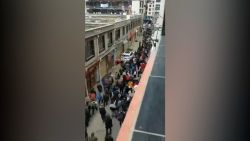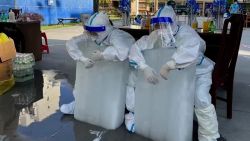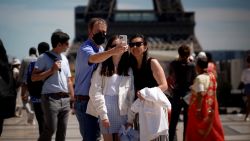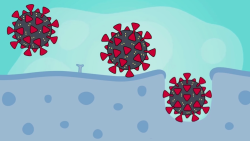Healthcare and other essential services across India are close to collapse as a second coronavirus wave that started in mid-March tears through the country with devastating speed.
Graveyards are running out of space, hospitals are turning away patients, and desperate families are pleading for help on social media for beds and medicine.
India reported 295,041 cases of coronavirus and 2,023 deaths Wednesday, its highest rise in cases and highest death increase recorded in a single day since the beginning of the pandemic, according to a CNN tally of figures from the Indian Ministry of Health.
“The volume is humongous,” said Jalil Parkar, a senior pulmonary consultant at the Lilavati Hospital in Mumbai, which had to convert its lobby into an additional Covid ward. “It’s just like a tsunami.”
“Things are out of control,” said Ramanan Laxminarayan, director of the Center for Disease Dynamics, Economics and Policy in New Delhi.
“There’s no oxygen. A hospital bed is hard to find. It’s impossible to get a test. You have to wait over a week. And pretty much every system that could break down in the health care system has broken down,” he said.
To prove his point, at least 22 Covid-19 patients who were on ventilator support died Wednesday waiting for oxygen supplies that were lost in an accident, a senior official from the Nashik district in the Indian state of Maharashtra said.
Prime Minister Narendra Modi addressed the nation on Tuesday, acknowledging the country’s “very big battle” against Covid-19.
He appealed to states to “use a lockdown as their last option,” even as the capital New Delhi entered its first full day of a week-long lockdown.
On Monday, Delhi Chief Minister Arvind Kejriwal warned that failing to halt movement in the city could lead to “tragedy.”
“We don’t want to take Delhi to a place where patients are lying in hospital corridors and people are dying on roads,” Kejriwal said.
On Tuesday, he warned that some Delhi hospitals were “left with just a few hours of oxygen,” as authorities scrambled to convert sports complexes, banquet halls, hotels and schools into much-needed treatment centers, with the goal to add 6,000 additional beds within days.
“Our healthcare system has reached its limit. It is now in a state of distress. It has not collapsed yet but it is in distress,” Kejriwal said. “Every healthcare system has its limits. No system can accommodate unlimited patients.”
With shortages being reported across the country, local and state leaders appealed to the federal government for more oxygen and medicine.
Modi appeared to answer those calls on Tuesday, announcing plans for the delivery of 100,000 cylinders of oxygen nationwide, new oxygen production plants, and hospitals dedicated to Covid patients.
But experts fear it’s too little, too late, as positive patients compete for limited resources and mass gatherings threaten to spread the virus even further.
In Wednesday’s incident in which the 22 people died in the Indian state of Maharashtra, senior official Suraj Mandhare told reporters the oxygen was lost due to a leakage from a tanker at the Zakir Hussain hospital.
“There was a valves leakage in tankers in Nashik, it was a large scale leakage, definitely this would impact the hospital where the tankers were headed,” Maharashtra’s health minister Rajesh Tope told reporters Wednesday.
The district administration is coordinating with hospital officials to make oxygen available to patients who need it at the earliest, Mandhare said. The patients who died required oxygen as their “pressure” was low and the leakage from this shipment meant that they did not receive the supply in time, Mandhare added.
India’s Minister of Home Affairs Amit Shah tweeted about the event saying: “I am distressed to hear the news of the accident of oxygen leak in a hospital in Nashik. I express my deepest condolences on this irreparable loss of those who have lost their loved ones in this accident. I pray to God for the health of all the other patients.”
In Maharashtra there is currently a daily demand for 1,550 metric tons of oxygen for Covid-19 patients but the state manufactures 1,250 metric tons of oxygen which is being used entirely for medical purposes.
The remaining 300 metric tons are being supplied by other states, Tope told reporters Wednesday. Maharashtra has 3,343,359 cases of coronavirus including 685,552 active cases and 61,343 deaths according to the Indian Ministry of Health on Wednesday.
Pleading for help online
With few official options available, families are turning to social media for help.
Mumbai resident Anil Tiwari, 34, lost his father to Covid-19 in November last year. Last week, his 58-year-old mother tested positive. She was admitted to hospital but needed an intensive care unit (ICU) bed, Tiwari said.
“I’m crying, running to get ICU bed for my mother,” Tiwari tweeted on Monday. “Kindly help to save my mother I love her more than anything.”
After days of effort, including calling the municipal authorities to get on a waitlist, Tiwari’s mother was finally given an ICU bed, Tiwari said on Tuesday. But now, she needs oxygen, which the hospital is in short supply of.
She is still able to walk, but is having difficulty breathing, Tiwari said.
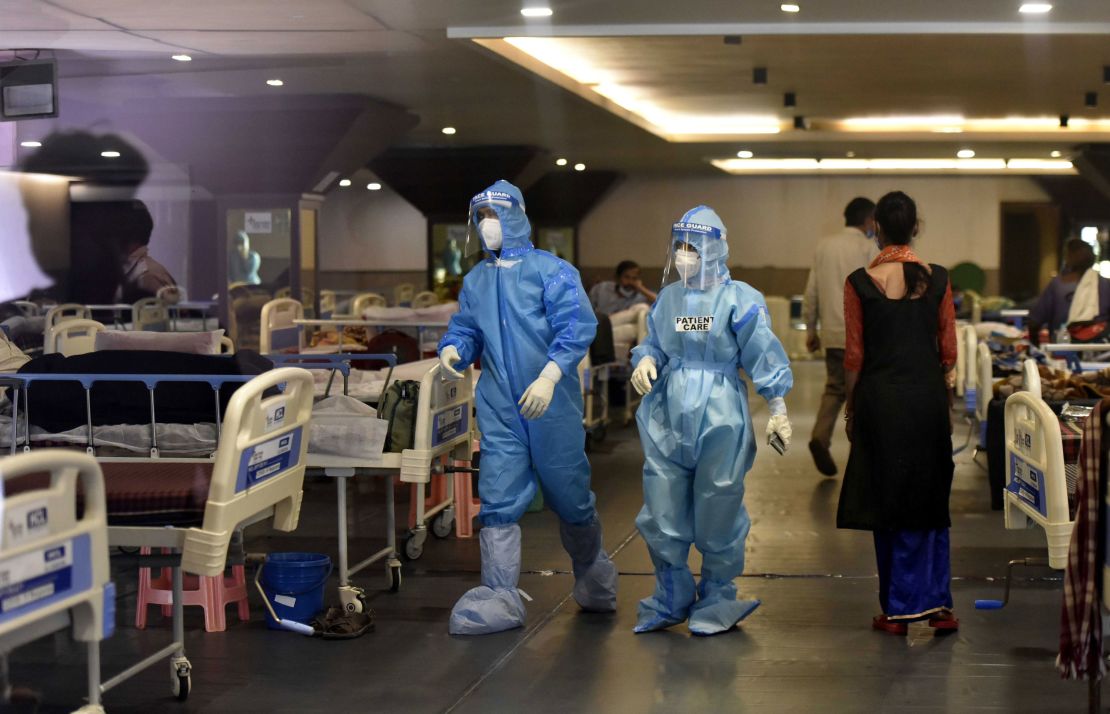
Demand for the drug Remdesivir and its active pharmaceutical ingredients has spiked during the second wave, prompting the government to temporarily ban the export of the medication to increase its supply in the domestic market.
The Indian government has approved the drug for emergency use within hospitals, though the World Health Organization (WHO) says evidence does not suggest the drug lessens the risk of dying from Covid-19 or needing mechanical ventilation.
Abhijeet Kumar, a 20-year-old college student, took to Twitter to raise money to pay for Remdesivir injections for his 51-year-old uncle.
Kumar said his uncle had been in hospital in Raipur, in the central Indian state of Chhattisgarh, since April 9 after testing positive for Covid.
“The injections are very expensive,” Kumar said. “They are saying it costs between 12,000 to 15,000 rupees (about $160-200). He has gotten two doses of the injection but he needs a third and we can’t afford it … my uncle works as a plumber.”
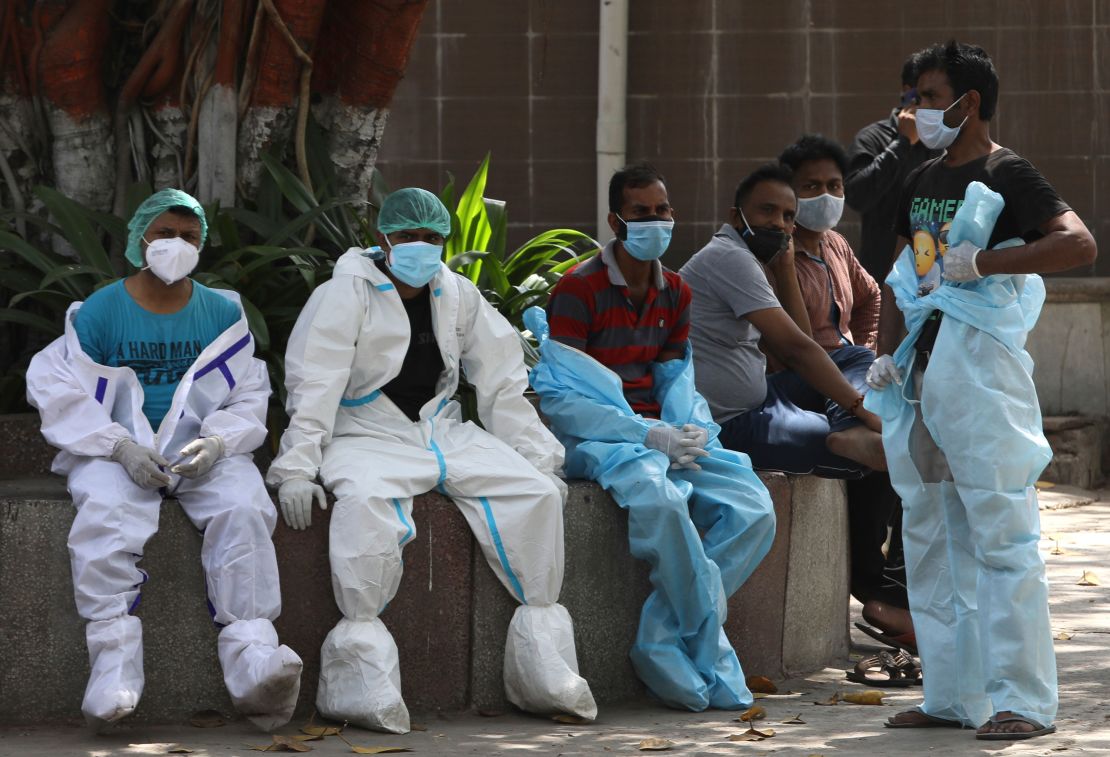
Seven major manufacturers of Remdesivir have slashed prices to between 899 rupees and 3,490 rupees (about $12-47) due to “the intervention of the government,” according to a government memorandum on April 17.
But several states have acknowledged that high demand and low supply has created a black market for Remdesivir and similar medications.
Even many doctors and nurses, too, are frantically searching for open beds and treatment options for their own loved ones, said Parkar, the pulmonary specialist in Mumbai.
“Everybody is sick,” he said. “A time has come that we don’t have beds for our own colleagues, for our own parents, for our own extended family.”
Complacency and public gatherings
The second wave, which has long surpassed the first wave in both new cases and infection rate, was “a situation that was created by complacency,” said Laxminarayan, from the Center for Disease Dynamics, Economics and Policy.
After the first wave ended in the winter, the government and public relaxed too much, due to a mix of Covid fatigue and a false sense of security, experts say.
In early March, weeks before cases began climbing again, the federal health minister declared that India was “in the endgame” of the pandemic.
This kind of triumphant rhetoric meant residents relaxed their Covid-safe behavior, such as social distancing or wearing face masks, experts say. And, despite warnings of Covid risks, large gatherings continued to take place – sports matches resumed, elaborate weddings went ahead, and movie cinemas reopened.
The biggest gathering by far is the Kumbh Mela, an important Hindu festival and one of the biggest pilgrimages on Earth. Millions of Indians are traveling from across the country to Haridwar, an ancient city in Uttarakhand state, to attend ceremonies and prayers and take holy dips in the Ganges River.
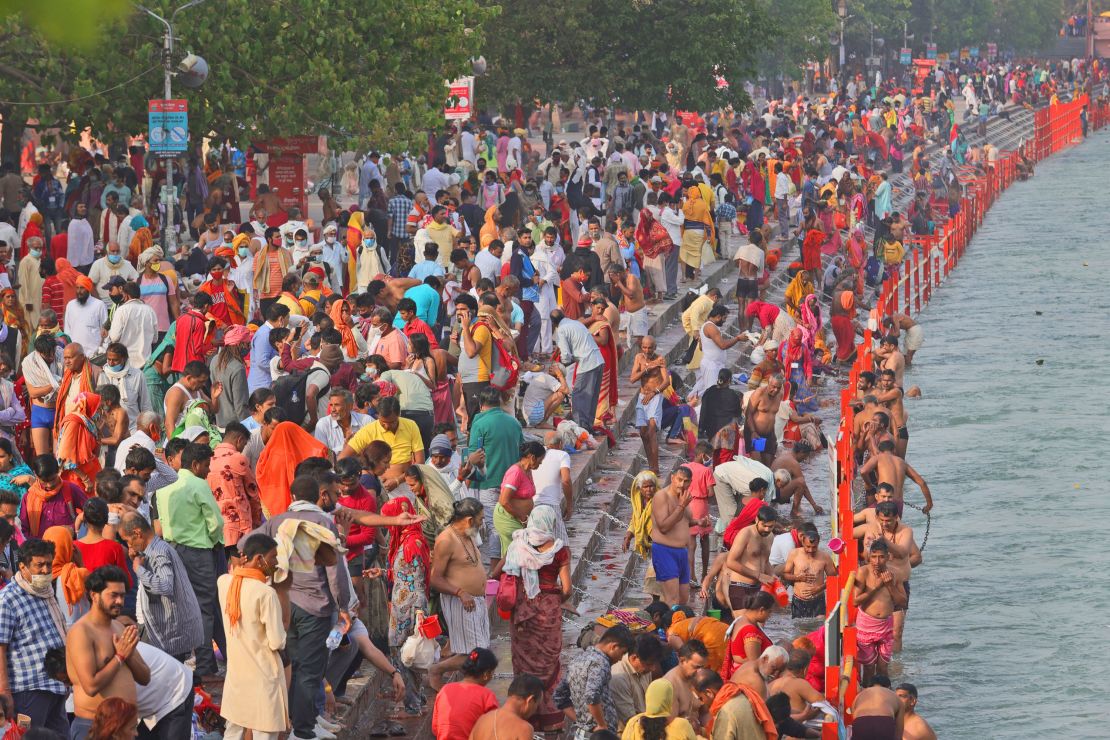
The festival officially began on April 1 and ends later this month. There are Covid-safe guidelines in place – visitors must register online and provide a negative Covid-19 test to participate in the holy baths, and thousands of officers are conducting surveillance – but experts worry it won’t be enough to contain the risk, given the sheer number of attendees. Several million are expected to visit on “auspicious” days.
“The Kumbh Mela could go down as one of the largest mass super spreading events ever, simply because of the size of the number of people who show up there for the ritual bathing in the Ganges,” said Laxminarayan.
For weeks, Modi, who has a significant Hindu base, refrained from commenting on the Kumbh Mela and its Covid risks. But earlier this week, he finally appealed to pilgrims to avoid congregating in Haridwar.
“Now Kumbh should be carried out symbolically amid the ongoing corona crisis,” Modi tweeted on Saturday.
But for some, Modi’s message rang hollow, as the prime minister continued to hold massive political rallies ahead of parliamentary and local council elections in four states and one union territory.
Videos from Modi’s rallies, including one in Tamulpur in Assam state on April 3, show him speaking before massive crowds, packed tightly together and cheering.
In West Bengal state, a significant election ground, tens of thousands attended rallies by Modi’s Bhartiya Janta Party (BJP) and the ruling Trinamool Congress Party.
Modi’s rallies have attracted sharp criticism from several other political figures, including a former finance minister who called the mass rallies “completely insensitive” given the Covid crisis.
In the face of surging cases, the Indian National Congress, India’s main opposition party, has suspended all public rallies in West Bengal.
And on Monday, the BJP said it would only hold “small public gatherings” with a cap of 500 people in the state due to “the difficult phase of the pandemic.”
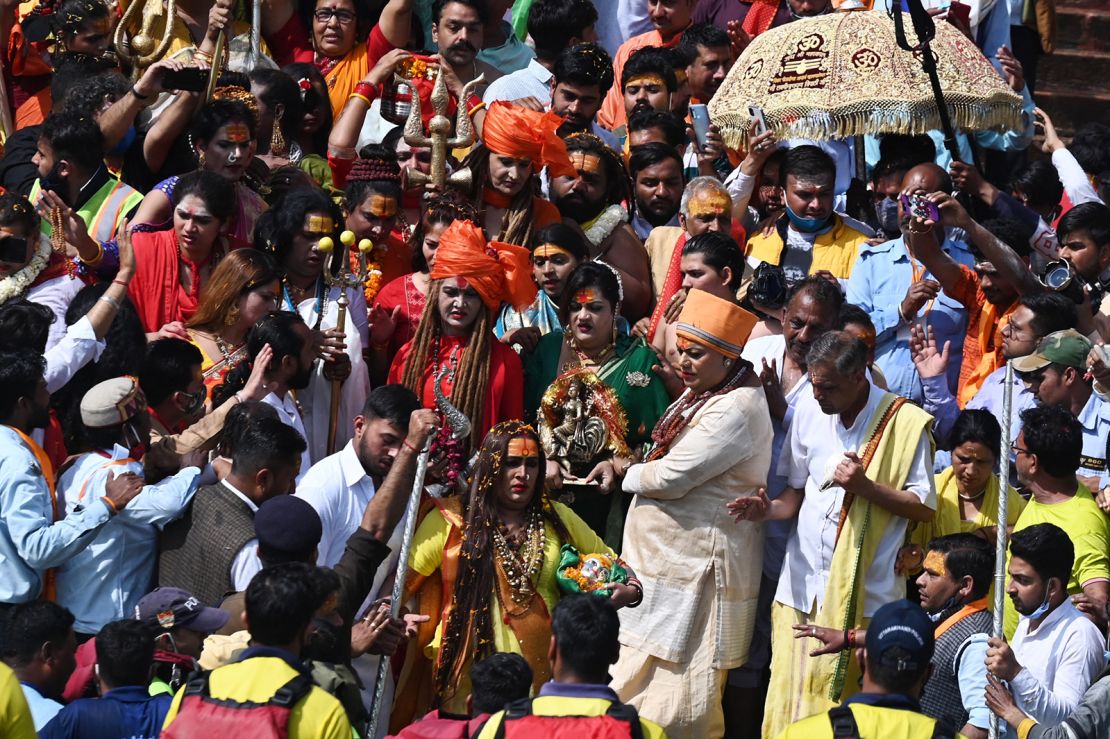
Meanwhile, the Kumbh Mela hasn’t been ordered to stop, nor have any new rules been imposed. Uttarakhand state has issued a series of new restrictions including a night curfew and cap on public gatherings – but the festival is exempt.
Haridwar has seen a spike in infections, with more than 6,500 new cases reported since the Kumbh Mela began.
Several religious sub-groups, including Juna Akhara and Niranjani Akhara, have since asked their followers from out of state to return home and follow guidelines. Some states and cities are requiring festival returnees to be tested and quarantined.
But medical workers fear it’s too late.
“It’s already gone on for a couple of weeks. Now, of course, they are dispersing, but they may be carrying the virus back to their homes at this point,” said Laxminarayan.”It’s truly a terrible situation at this point.”
CNN’s Esha Mitra contributed to this report.






